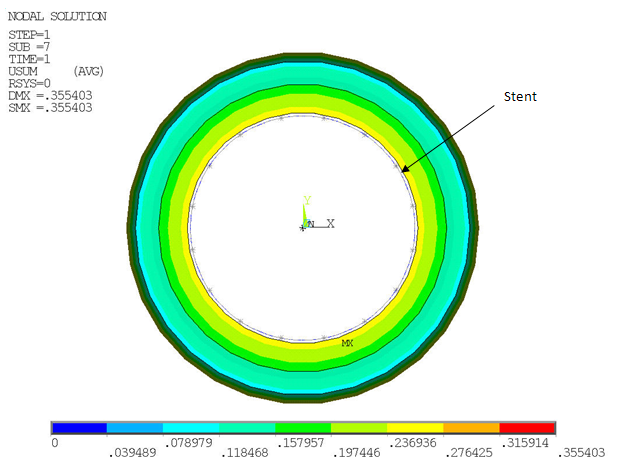A nonlinear static analysis (ANTYPE,STATIC) with large-deflection effects (NLGEOM,ON) is specified. Contact parameters are optimized (CNCHECK,AUTO) to achieve better convergence based on overall contact-pair behaviors.
Load Step 1
During the first load step, an elevated blood pressure of 0.1 N/mm2 is applied to the inner surface of the plaque wall to cause sufficient radial wall expansion for subsequent stent placement.
Stent contact elements (CONTA177) are killed (EKILL) to remove the effects of the stent.
This load step uses a maximum of 20 substeps with 20 initial substeps (NSUBST,20,20).
The following figure shows the effects of the first load step:
Load Steps 2 and 3
Load steps 2 and 3 use three total substeps to allow the Newton-Raphson residuals (from the nonlinear expansion in load step 1) to equilibrate after the stent contact elements are reactivated (EALIVE).
Load Step 4
In the fourth load step, blood pressure is ramped to a magnitude of 0.0133 N/mm2, which represents the mean arterial blood pressure (100 mmHg).
Under this reduced load, the atherosclerotic artery collapses onto the stent scaffold.
This load step uses 200 initial substeps, 2000 maximum substeps, and 20 minimum substeps to obtain contact convergence (NSUBST,200,2000,20).
Nonlinear stabilization (STABILIZE,CONST,ENERGY,0.1) helps to achieve solution convergence during this load step.



